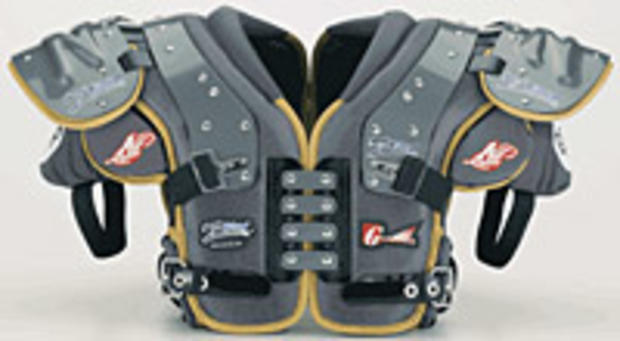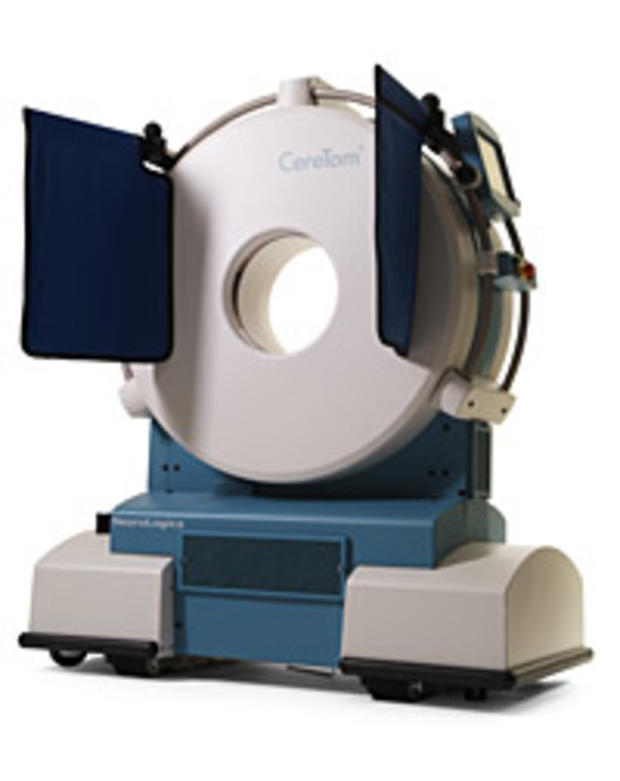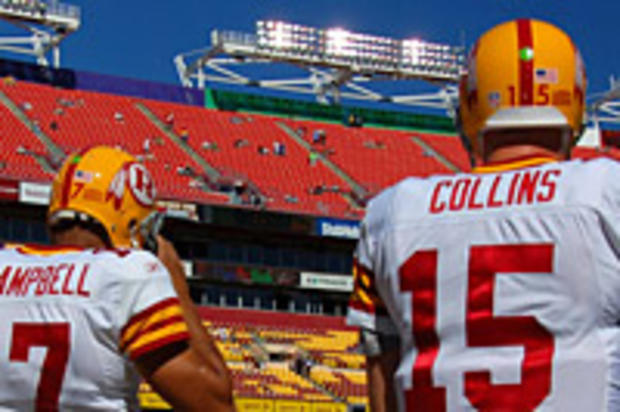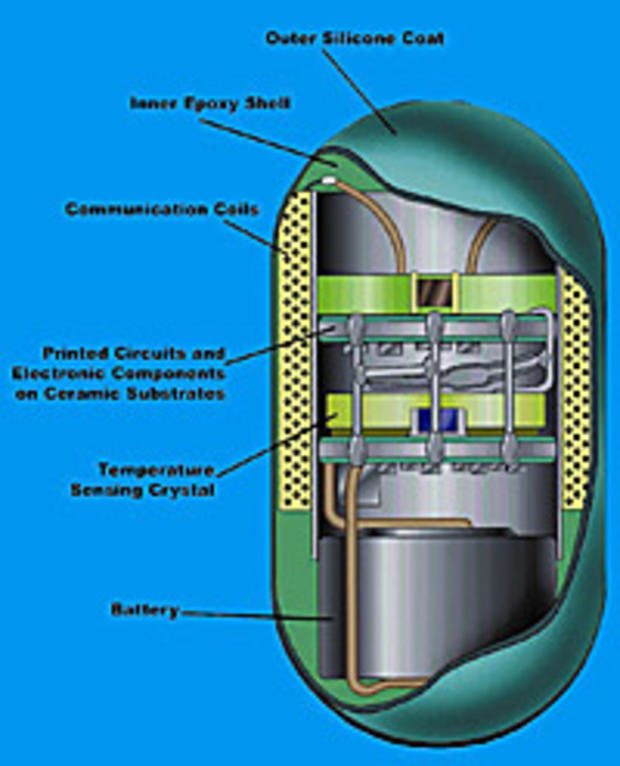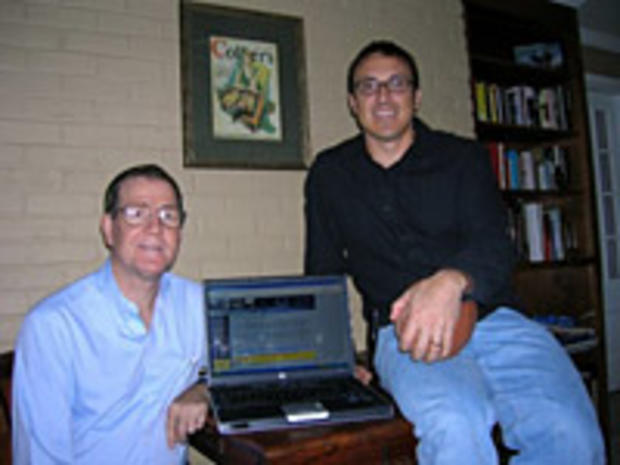The Tech Behind the Game
When it comes to adopting new technology, professional football can be decidedly old school. NFL players often stick to the gear they wore in high school and college for superstitious reasons, says Mark Patterson, VP of sales for sports-equipment retailer Team Express. Still, the sport's evolution has introduced a few new gadgets to upgrade everything from player safety to on-the-field communication. Here are some of the most important high-tech investments NFL teams have made in recent years.
Breathable shoulder pads
Z-COOL shoulder pads help keep players from over-heating.
Padding usually prevents the body from releasing heat, which means a player's gear can get stiflingly hot in the middle of a game or practice. Ed Tobergte, president of Gear 2000, invented Z-COOL, a new kind of shoulder-pad technology to help wick away moisture and keep players cooler. A breathable, lightweight fabric layer covers the pads while an inner plastic layer features large holes to let air and moisture flow through the foam. As the athlete perspires, his sweat coats water-proof beads in the padding, letting air circulate to evaporate moisture and help cool down the body.
Who uses it: About 25 percent of teams
Cost: $99.95 to $199.95
Portable CT scanner
The portable, cordless CereTom lets physicians scan players for head trauma on the field.
NFL team physicians use the cordless, battery-operated CereTom to scan players for head trauma while they're still on the field. The scans take about five minutes, and then doctors can transmit the data instantly and wirelessly to a radiologist for diagnosis. Hon Jin Chang, sales operations coordinator for NeuroLogica Corporation, the device's manufacturer, says NFL physicians used the portable scanner for the first time last season after several big tackles gave players minor concussions. The technology also played a huge role last May in potentially saving the life of boxer Lorenzo Bethea. A scan revealed Bethea suffered a brain bleed and needed immediate medical attention.
Who uses it: Indianapolis Colts and Oakland Raiders in 2007
Cost: $329,900
In-helmet radio for the defense
The green dot indicates which player's helmet is “live,” or connected to the
coach’s microphone. (Helmets image © 2007 Scott Ableman). Used with permission
of Scott Ableman. All rights reserved.
Quarterbacks have used radio headsets to communicate with coaches since 1994. As of April 2008, defense players accustomed to relying on hand signals can now use the same technology. Each team can only have one "live" defensive helmet — a helmet equipped with a Motorola transmitter and a small speaker in each ear hole — on the field at a time. A small green dot on the back of the helmet lets referees know which player is wearing the device. As with the quarterback's radio helmet, coaches have 25 seconds to communicate with their chosen defensive player when the play clock begins to tick down from 40 seconds; at the 15-second mark, all microphones for the radio transmitters shut off. To ensure the system runs smoothly, 268 million military-grade encryption codes protect the frequencies.
Who uses it: All 32 teams
Cost: $28,000 per system
Heat-sensor pill
CorTemp, an ingestible thermometer, is one of the most accurate methods for measuring players’ temperatures.
Ever since Vikings lineman Korey Stringer died during practice in 2001 when his temperature hit 108 degrees, teams have sought ways to better monitor body heat. CorTemp is among the most accurate methods of measuring an athlete's temperature. Before practice, players at risk for over-heating swallow a small, silicon-coated sensor pill that is powered by a silver-oxide battery and passes harmlessly through the gastrointestinal tract. Personnel can track multiple players' temperatures using a short-range recorder; the recorders beam information to the sidelines, where a physician with a PDA and base station can monitor all at-risk players. Teams training in warmer climates use the CorTemp system to track players prone to heat illness or stroke.
Who uses it: Six teams
Cost: Each recorder costs approximately $2,000; the pills are $32 each; the PDA/base station is about $3,900
Software that calls plays
Backgammon champs Chuck Bower, left, and Frank Frigo invented a computer-modeling
program that they say can call football plays better than any NFL coach.
If a computer can learn how to win strategic games like checkers, chess, and backgammon, can it also learn how to win at football? Backgammon champions Frank Frigo and Chuck Bower developed ZEUS, a computer-modeling program that uses real NFL game statistics to analyze on-the-field action and determine which plays have the best chance for success. For example, ZEUS can call whether a team should run the ball or punt during a specific fourth-down scenario. "Zeus sets-up the same situation in a virtual environment, and we can see which play statistically had a greater chance of winning the game," says game-theory expert Frigo. The software also can run thousands of simulations to mimic how a pair of teams will fair on the field. "Even using it as a tutorial for the coaching staff could be helpful," says Frigo, calling Zeus' game analysis "far deeper and more complex" than that of a coach.
Who uses it: No coaches are willing to try it — yet. But Frigo is currently using ZEUS to analyze plays on The New York Times' Fifth Down blog
Cost: Depends on a variety of variables, says Frigo, such as how much a team is willing to use the program
